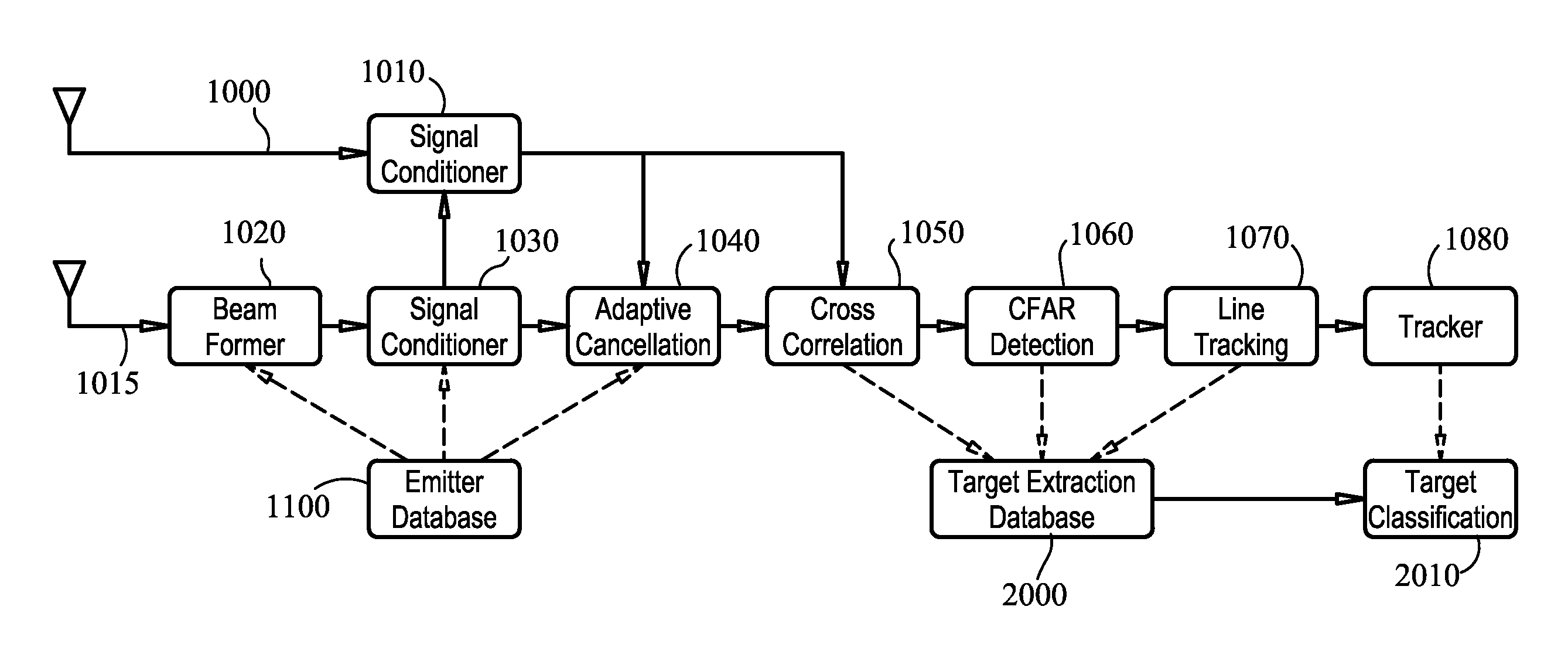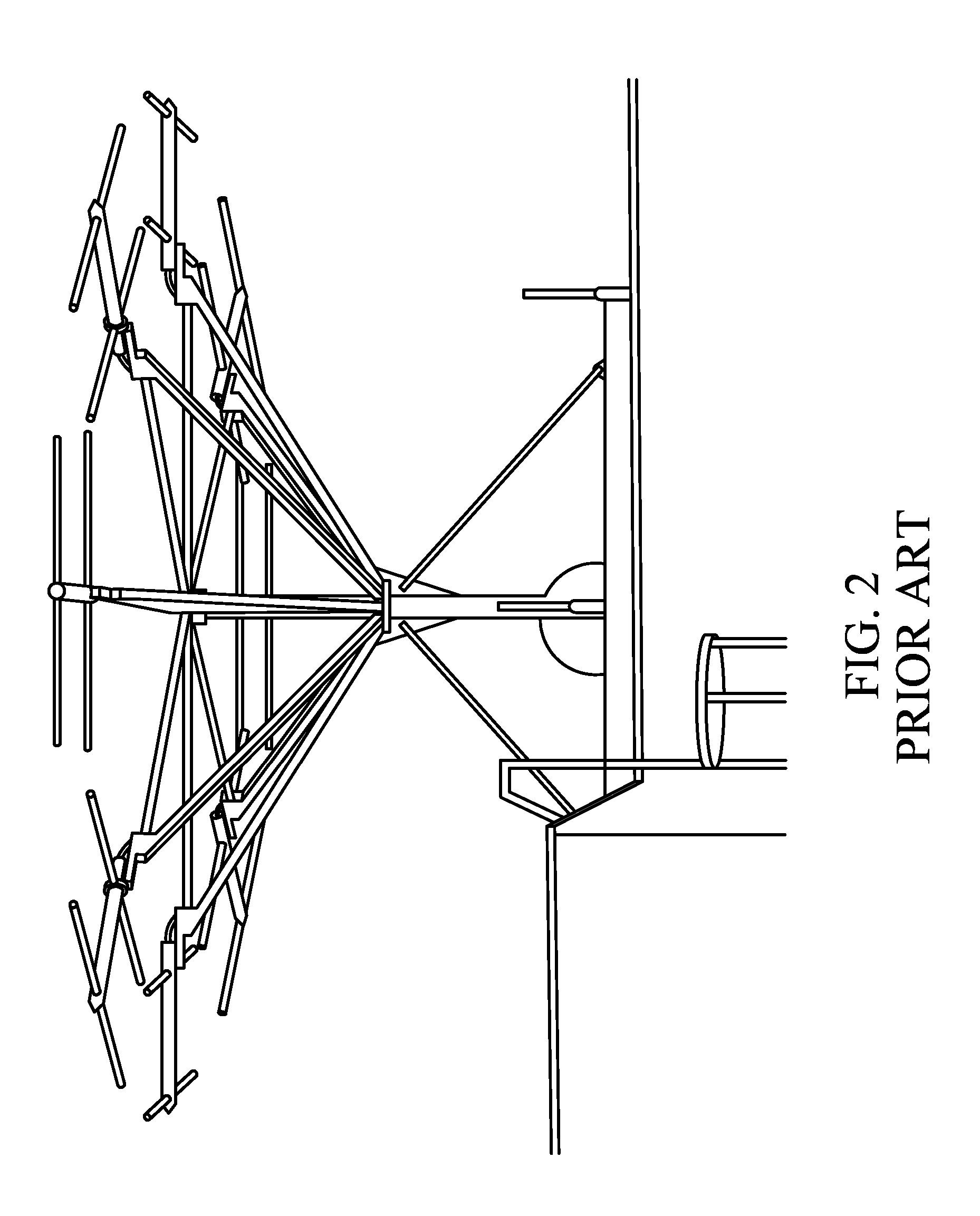Enhanced Passive Coherent Location Techniques to Track and Identify UAVs, UCAVs, MAVs, and Other Objects
a technology of location and coherent location, applied in the field of aircraft tracking, can solve the problems of low frequency band stealth capability, low stealth capability, and inability to detect outgoing signals, etc., and achieve the effect of high confidence in target identification and classification
- Summary
- Abstract
- Description
- Claims
- Application Information
AI Technical Summary
Benefits of technology
Problems solved by technology
Method used
Image
Examples
first embodiment
[0079] Referring to FIG. 4, in the present invention, a PCL tracking and identification system is provided as a standalone system. Referring to FIG. 4, reference signal antenna 1000 passes the various reference signals to the signal conditioner 1010. The beam forming antenna 1015 passes the reflected signals through beam former 1010 to the signal conditioner 1030. Like most passive radar systems that use simple antenna arrays with several antenna elements and element-level digitization, this allows the direction of arrival of echoes to be calculated using standard radar beam forming techniques, such as amplitude monopulse using a series of fixed, overlapping beams or more sophisticated adaptive beam forming.
[0080] Signal conditioners 1010 and 1030 perform some transmitter-specific conditioning of the signal before cross-correlation processing. Conditioning includes analogue band-pass filtering of the signal, equalization to improve the quality of the reference signal, and removal of...
second embodiment
[0085] Referring to FIG. 5, in the present invention, PCL tracking and identification is combined with other sources. This embodiment shows the utility of PCL when integrated with other sources of surveillance that include ADS-B, multilateration, broadband emitter tracking, or Passive Emitter Tracking (PET), as well as identification information from all sources including electronic intelligence (ELINT). Aircraft 100 is flying with the range of multilateration / ADS-B receivers and broadband PET receivers, shown as combined receivers for this embodiment 150. Multilateration / ADS-B / PET sensor data is sent to central server 250 using a variety of communications media, including either of fiber, telephone line, wireless, or satellite communications 200.
[0086] The PCL channel consists of a reference antenna and a beam-forming network and is shown separately as 450 but in practice may be co-located with the other sensors 150. The PCL information is processed to provide tracks and target cla...
PUM
 Login to View More
Login to View More Abstract
Description
Claims
Application Information
 Login to View More
Login to View More - R&D
- Intellectual Property
- Life Sciences
- Materials
- Tech Scout
- Unparalleled Data Quality
- Higher Quality Content
- 60% Fewer Hallucinations
Browse by: Latest US Patents, China's latest patents, Technical Efficacy Thesaurus, Application Domain, Technology Topic, Popular Technical Reports.
© 2025 PatSnap. All rights reserved.Legal|Privacy policy|Modern Slavery Act Transparency Statement|Sitemap|About US| Contact US: help@patsnap.com



